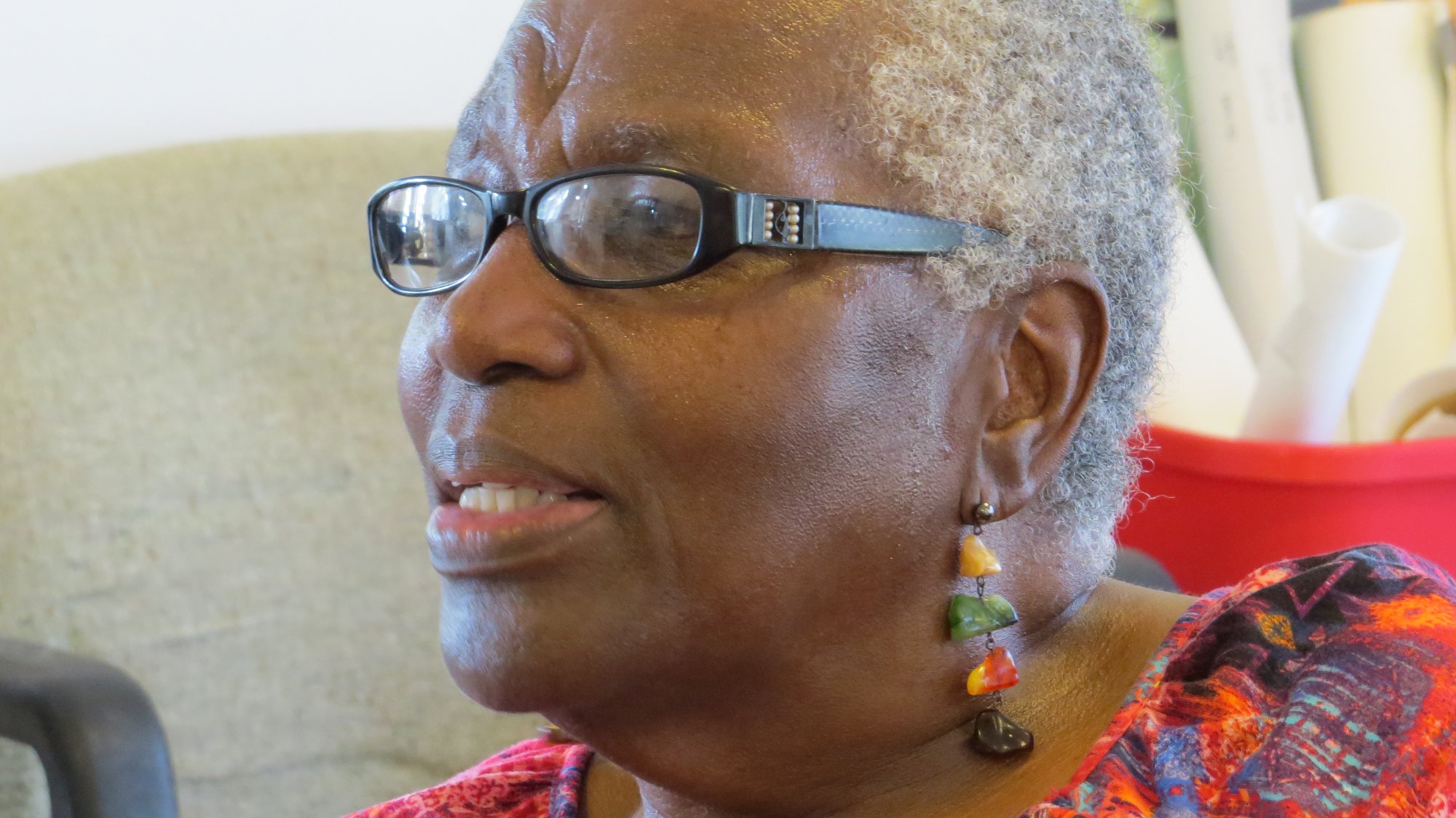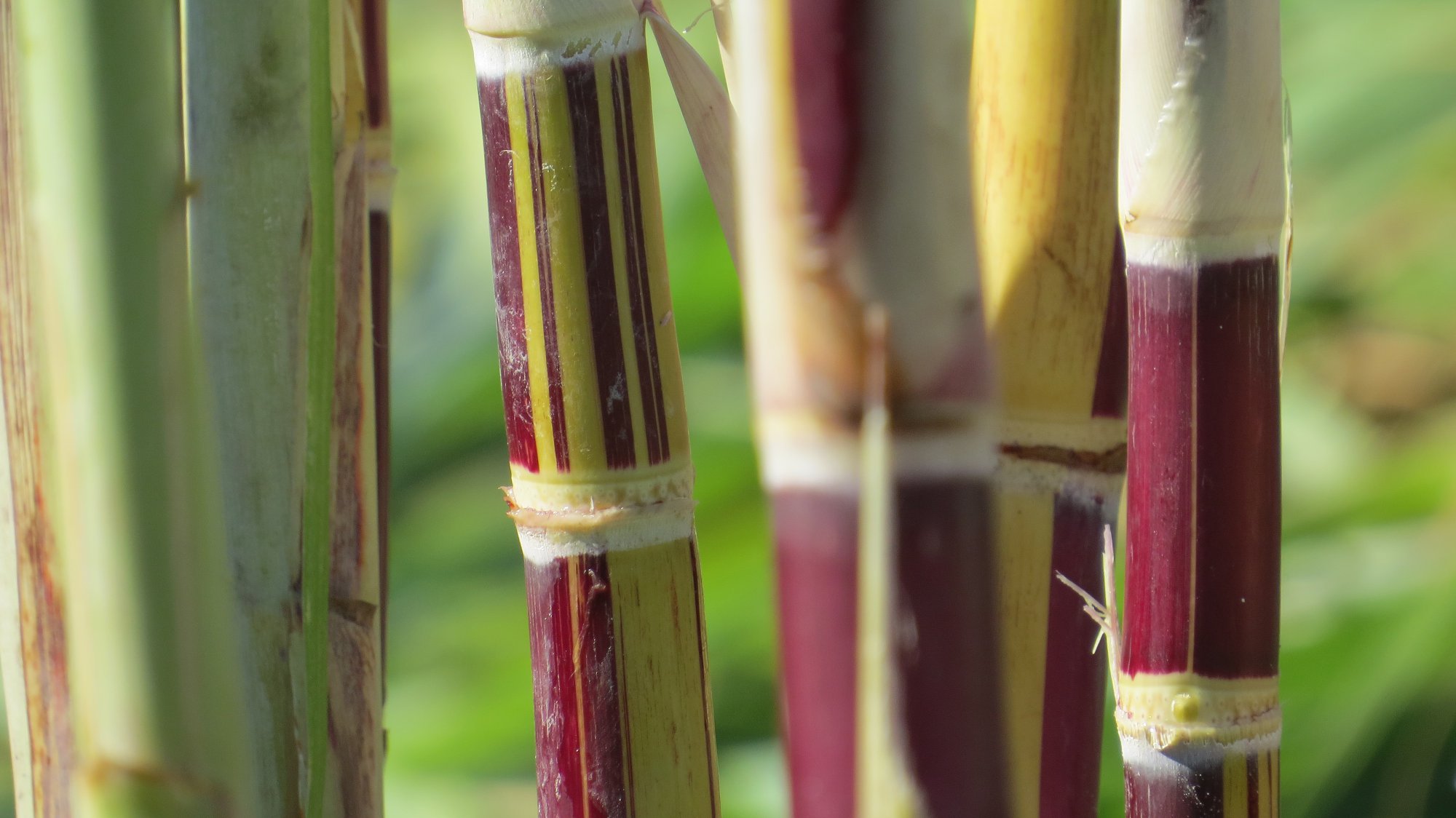the cane is back!
story and photos by Jim Melvin
Clemson helps reintroduce Purple Ribbon sugarcane to Sapelo Island, the birthplace of commercial sugar production in the U.S.
A project first conceived in the spring of 2014 reached fruition in the fall of 2015 when a splendorous field of sugarcane was chopped to the ground and carefully prepared for its next stage of life.
The effort to reintroduce Purple Ribbon sugarcane and several similar varieties to Sapelo Island—the original birthplace of commercial sugar production in the United States—was first told in the Fall 2015 issue of Glimpse.
Starting in late 2014, 84 tiny plants representing thirteen varieties of heirloom cane were raised and tended over several months in a greenhouse on the Clemson campus.

Cornelia Walker Bailey: “Two hundred years ago, we planted sugarcane here out of necessity. We weren’t given a choice. Now we’re going to plant it because we have a choice.”
On April 14, 2015, these plants, then about eight inches tall, were moved to a new home in the sandy soils of an organic farm in Townsend, Georgia. On October 31, 2015, the cane, now ten feet tall, was chopped down and distributed between the mainland farm, where it was immediately replanted, and Sapelo, where residents chose to bank it over the winter and replant it on the island in the spring.
“The ancestral cane is back where it originated in the United States more than two hundred years ago,” says David Shields, chairman of the Carolina Gold Rice Foundation and an expert on Southern cuisine. “It has been buried between layers of leaves and straw to wait out the winter. In the spring, it will be uncovered and replanted on the island that made it famous.”
The project combined rigorous genetics, painstaking varietal research and Sapelo islanders’ centuries-old know-how. A diverse team of scientists, historians and Sapelo locals worked tirelessly for more than sixteen months. In addition to Shields, key members included Clemson University geneticist Stephen Kresovich, his assistants Matt Myers and Kelsey Zielinski, organic farmers Jerome Dixon and William Thomas, and islander Cornelia Walker Bailey.
“Ultimately, the goal is to establish a productive sugarcane industry on Sapelo for the benefit of its people. Not a big industry, but an industry that’s based on quality,” says Kresovich, Coker Chair of Genetics and director of Clemson’s Institute of Translational Genomics. “And the intent is to produce an exceptional product that can be used to make alcohol, sugars and syrups. Upscale restaurants in Charleston, Savannah, and Atlanta are showing interest, so the market is already there.”
The project was first conceived in the spring of 2014, when the Sapelo Island Cultural and Revitalization Society invited Shields and several cohorts to the island to discuss ways for its people to generate additional income to offset a sudden rise in property taxes that puts an undue financial strain on many of Sapelo’s residents.
After the meeting, Shields began a search to find the original Purple Ribbon cane, and he turned to Kresovich for help. During the summer of 2014, Shields, Kresovich, and Charley Richard, a noted cane expert from Louisiana, were joined by Clemson’s Bradley Rauh and Hannah Mosby to sift through all the varieties of sugarcane they could find in public andprivate collections.

The project was first conceived in the spring of 2014, when the Sapelo Island Cultural and Revitalization Society invited Shields and several cohorts to the island to discuss ways for its people to generate additional income.
Following the acquisition of the sugarcanes, Kresovich used molecularand agronomic forensic testing to validate the genetic characteristics of Purple Ribbon and other closely related canes. Once the varieties were chosen, they were tended in the greenhouse and prepared for the next stages of their journey: first to be planted and grown to maturity at Georgia Coastal Gourmet Farms, and then to be chopped down and transported to Sapelo Island.
Dixon, the farmer who oversaw the sugarcane from April through October, felt both elated and wistful.
“It’s almost like the cane had become a member of my family. I’ve watched these babies from the time we put them in the ground,” Dixon says. “And the growing process couldn’t have gone more smoothly. About all I had to do was keep them watered and fertilized. I didn’t have any aphids or other insect problems. And the end result has been impressive. The quality is just phenomenal. I’ve never seen cane this sweet before.”
Nestled off the coast of Georgia amid a string of barrier islands, Sapelo is largely pristine and undeveloped. More than 16,000 of its acres are owned and managed by the state of Georgia. But a private community named Hog Hammock still survives. Many of the inhabitants of this 434-acre tract, which represents about 3 percent of the island’s total size, are direct descendants of West Africans torn from their homeland three centuries ago and forced into slavery in America.
As Hog Hammock’s older residents have passed away and the younger ones have fled to the mainland in search of jobs, the final relatives of those long-ago slaves have dwindled. Around fifty now inhabit the island on a permanent basis. But though their numbers are decreasing, their heritage still lingers. The Geechee of Sapelo have retained ethnic traditions that existed in their ancestors’ country of origin from as far back as the mid-1700s. To allow this culture to vanish would be tragic not only for Sapelo but for anyone interested in the preservation of our nation’s tumultuous history.
It is hoped that the income eventually generated by the sugarcane, which will be harvested for the first time in the early fall of 2016, will play a role in helping the islanders remain in their ancestral home.
“Two hundred years ago, we planted sugarcane here out of necessity. We weren’t given a choice,” says Bailey, the island’s charismatic matriarch who was born on Sapelo seven decades ago. “Now we’re going to plant it because we have a choice. And by putting in some sweat and effort, the dividends will come back to our community. That’s what this is all about. As for what happens next, only time will tell.”



